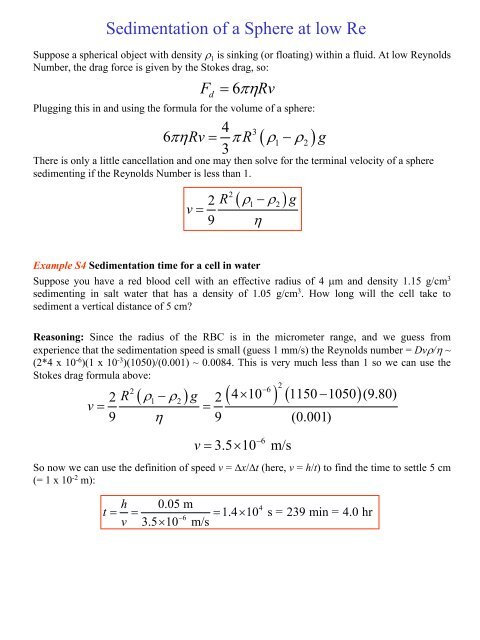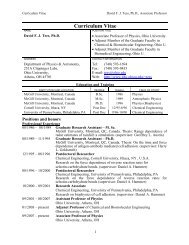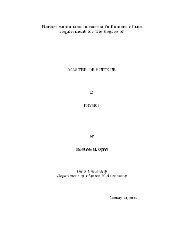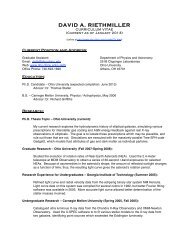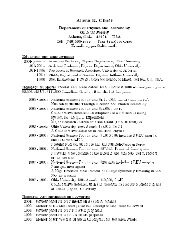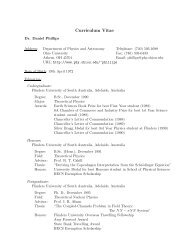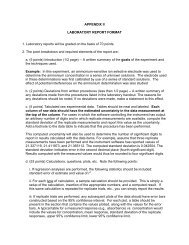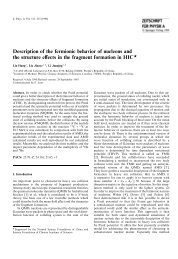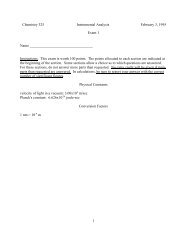Fluids in Motion Supplement I
Fluids in Motion Supplement I
Fluids in Motion Supplement I
Create successful ePaper yourself
Turn your PDF publications into a flip-book with our unique Google optimized e-Paper software.
Sedimentation of a Sphere at low Re<br />
Suppose a spherical object with density ρ 1 is s<strong>in</strong>k<strong>in</strong>g (or float<strong>in</strong>g) with<strong>in</strong> a fluid. At low Reynolds<br />
Number, the drag force is given by the Stokes drag, so:<br />
F d<br />
= 6πηRv<br />
Plugg<strong>in</strong>g this <strong>in</strong> and us<strong>in</strong>g the formula for the volume of a sphere:<br />
4<br />
6πη π ρ ρ<br />
3<br />
( )<br />
3<br />
Rv= R<br />
1−<br />
2<br />
g<br />
There is only a little cancellation and one may then solve for the term<strong>in</strong>al velocity of a sphere<br />
sediment<strong>in</strong>g if the Reynolds Number is less than 1.<br />
v =<br />
2<br />
9<br />
R<br />
2<br />
( ρ − ρ )<br />
1 2<br />
η<br />
g<br />
Example S4 Sedimentation time for a cell <strong>in</strong> water<br />
Suppose you have a red blood cell with an effective radius of 4 µm and density 1.15 g/cm 3<br />
sediment<strong>in</strong>g <strong>in</strong> salt water that has a density of 1.05 g/cm 3 . How long will the cell take to<br />
sediment a vertical distance of 5 cm?<br />
Reason<strong>in</strong>g: S<strong>in</strong>ce the radius of the RBC is <strong>in</strong> the micrometer range, and we guess from<br />
experience that the sedimentation speed is small (guess 1 mm/s) the Reynolds number = Dvρ/η ~<br />
(2*4 x 10 -6 )(1 x 10 -3 )(1050)/(0.001) ~ 0.0084. This is very much less than 1 so we can use the<br />
Stokes drag formula above:<br />
2<br />
−6<br />
( ρ − ρ ) g ( × ) ( − )<br />
2<br />
2 R<br />
4 10 1150 1050 (9.80)<br />
1 2 2<br />
v = =<br />
9 η 9 (0.001)<br />
v = ×<br />
−6<br />
3.5 10 m/s<br />
So now we can use the def<strong>in</strong>ition of speed v = ∆x/∆t (here, v = h/t) to f<strong>in</strong>d the time to settle 5 cm<br />
(= 1 x 10 -2 m):<br />
t<br />
h 0.05 m<br />
= = = ×<br />
−6<br />
v 3.5×<br />
10 m/s<br />
4<br />
1.4 10 s = 239 m<strong>in</strong> = 4.0 hr


